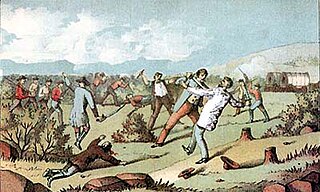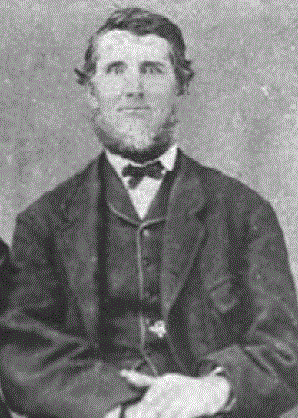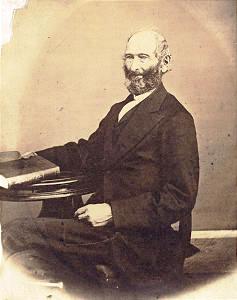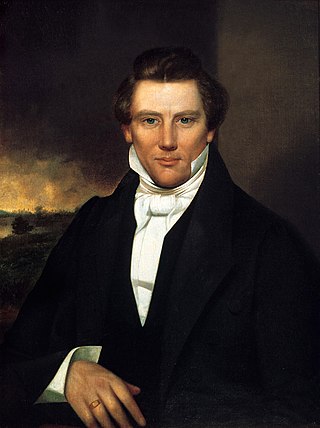
The Danites were a fraternal organization founded by Latter Day Saint members in June 1838, in the town of Far West, Caldwell County, Missouri. During their period of organization in Missouri, the Danites operated as a vigilante group and took a central role in the events of the 1838 Mormon War. They remained an important part of Mormon and non-Mormon folklore, polemics, and propaganda for the remainder of the 19th century, waning in ideological prominence after Utah gained statehood. Notwithstanding public excommunications of Danite leaders by the Church and both public and private statements from Joseph Smith referring to the band as being both evil in nature and a "secret combination", the nature and scope of the organization and the degree to which it was officially connected to the Church of Christ are not agreed between historians. Early in the group's existence, Joseph Smith appeared to endorse its actions, but later turned against it as violence increased and the actions of the Danites inspired a hysteria in Missouri that eventually led to the Extermination Order. According to an essay on the website of the Church of Jesus Christ of Latter-day Saints, "Historians generally concur that Joseph Smith approved of the Danites but that he probably was not briefed on all their plans and likely did not sanction the full range of their activities."

Oliver H. P. Cowdery was an American religious leader who, with Joseph Smith, was an important participant in the formative period of the Latter Day Saint movement between 1829 and 1836. He was the first baptized Latter Day Saint, one of the Three Witnesses to the Book of Mormon's golden plates, one of the first Latter Day Saint apostles and the Assistant President of the Church.

The Latter Day Saint movement is the collection of independent church groups that trace their origins to a Christian Restorationist movement founded by Joseph Smith in the late 1820s.

The Church of Christ was the original name of the Latter Day Saint church founded by Joseph Smith. Organized informally in 1829 in upstate New York and then formally on April 6, 1830, it was the first organization to implement the principles found in Smith's newly published Book of Mormon, and thus its establishment represents the formal beginning of the Latter Day Saint movement. Later names for this organization included the Church of the Latter Day Saints, the Church of Jesus Christ, the Church of God, the Church of Christ of Latter Day Saints, and the Church of Jesus Christ of Latter Day Saints.

The 1838 Mormon War, also known as the Missouri Mormon War, was a conflict between Mormons and their neighbors in Missouri. Early in the third decade of the nineteenth century, members of the Church of Christ began to migrate into Jackson County, Missouri. Their religious and political beliefs and practices differed from those of their Missourian neighbors. This and their social and economic cohesiveness began to trigger tensions and episodes of vigilante violence.

David Whitmer was an early leader of the Latter Day Saint Movement and one of the Three Witnesses to the gold plates of the Book of Mormon. Whitmer later distanced himself from Joseph Smith and was excommunicated from the church in 1838, but continued to affirm his testimony of the Book of Mormon. He was the most interviewed Book of Mormon witness.
Thomas Baldwin Marsh was an early leader in the Latter-day Saint movement and an original member of the Quorum of the Twelve Apostles, who served as the quorum's first president in the Church of the Latter Day Saints from 1835 to 1838. He withdrew from the church in 1838, was excommunicated from it in 1839, and remained disaffected for almost 19 years. Marsh was rebaptized into the Church of Jesus Christ of Latter-day Saints in July 1857, but never again served in church leadership positions.

Lyman Wight was an early leader in the Latter Day Saint movement. He was the leader of the Latter Day Saints in Daviess County, Missouri, in 1838. In 1841, he was ordained a member of the Quorum of the Twelve Apostles. After the death of Joseph Smith resulted in a succession crisis, Wight led his own break-off group of Latter Day Saints to Texas, where they created a settlement. While in Texas, Wight broke with the main body of the group led by Brigham Young. Wight was ordained president of his own church, but he later sided with the claims of William Smith, and eventually of Joseph Smith III. After his death, most of the "Wightites" joined with the Reorganized Church of Jesus Christ of Latter Day Saints.

The Three Witnesses is the collective name for three men connected with the early Latter Day Saint movement who stated that an angel had shown them the golden plates from which Joseph Smith translated the Book of Mormon; they also stated that they had heard God's voice, informing them that the book had been translated by divine power. The Three are part of twelve Book of Mormon witnesses, who also include Smith and the Eight Witnesses.

The Eight Witnesses were one of the two groups of witnesses who made statements stating that they had seen the golden plates which Joseph Smith said was his source material for the Book of Mormon. An earlier group of witnesses who said they had seen the plates were called the Three Witnesses.

John Whitmer was an early leader in the Latter Day Saint movement. He was one of the Eight Witnesses of the Book of Mormon's golden plates. Whitmer was also the first official Church Historian and a member of the presidency of the church in Missouri from 1834 to 1838.
Warren Farr Parrish was a leader in the early Latter Day Saint movement. Parrish held a number of positions of responsibility, including that of scribe to church president Joseph Smith. Parrish and other church leaders became disillusioned with Smith after the failure of the Kirtland Safety Society and left the Church of Jesus Christ of Latter Day Saints in 1837. In 1838, they formed a short-lived church in Kirtland, Ohio which they called The Church of Christ, after the original name of the church organized by Smith. This church soon disintegrated as the result of disagreement between its leaders. By 1844, Parrish was working as a Baptist minister in the Fox River area of Wisconsin & Illinois.
John Corrill was an early member and leader of the Church of Jesus Christ of Latter Day Saints, and an elected representative in the Missouri State Legislature. He was prominently involved in the Mormon conflicts in Missouri before leaving the church in 1839 and publishing A Brief History of the Church of Christ of Latter Day Saints .

The life of Joseph Smith from 1838 to 1839, when he was 33–34 years old, covers a period beginning when Smith left Ohio in January 1838 until he left Missouri and moved to Nauvoo, Illinois in 1839.
George Washington Robinson was a leader during the early history of the Latter Day Saint movement being the first secretary to the First Presidency of the Church of Jesus Christ of Latter Day Saints. He was also a Danite leader and an official church recorder in the 1830s and was a member of the Quorum of the Twelve Apostles in the Rigdonite church established in 1845.

The Book of Mormon witnesses were a group of contemporaries of Joseph Smith who claimed to have seen the golden plates from which Smith translated the Book of Mormon. The most significant witnesses were the Three Witnesses and the Eight Witnesses, all of whom allowed their names to be used on two separate statements included with the Book of Mormon and church leaders contend that the witnesses never denied their accounts. Critics have challenged the nature and reliability of the accounts, as eyewitness testimony is increasingly known to be unreliable.
In the theology of the Latter Day Saint movement, an endowment refers to a gift of "power from on high", typically associated with the ordinances performed in Latter Day Saint temples. The purpose and meaning of the endowment varied during the life of movement founder Joseph Smith. The term has referred to many such gifts of heavenly power, including the confirmation ritual, the institution of the High Priesthood in 1831, events and rituals occurring in the Kirtland Temple in the mid-1830s, and an elaborate ritual performed in the Nauvoo Temple in the 1840s.

This is a chronology of Mormonism. In the late 1820s, Joseph Smith, founder of the Latter Day Saint movement, announced that an angel had given him a set of golden plates engraved with a chronicle of ancient American peoples, which he had a unique gift to translate. In 1830, he published the resulting narratives as the Book of Mormon and founded the Church of Christ in western New York, claiming it to be a restoration of early Christianity.

The following outline is provided as an overview of and topical guide to the life and influence of Joseph Smith:










